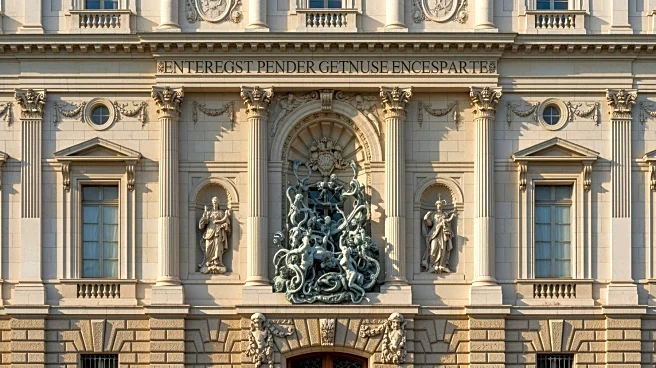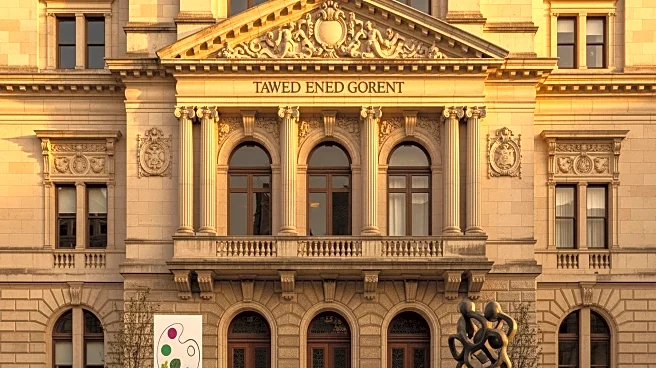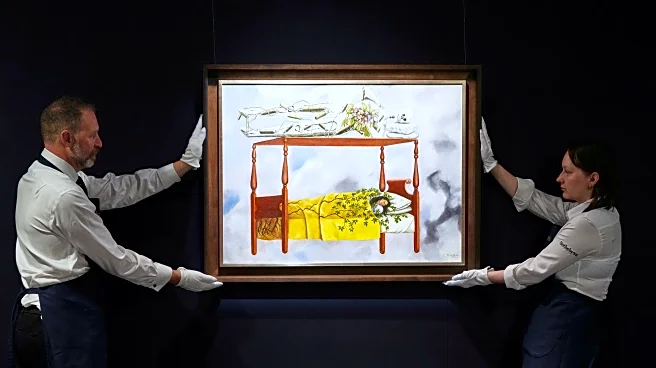What's Happening?
Sotheby's is set to auction a Gustav Klimt portrait, 'Portrait of Elisabeth Lederer,' which is anticipated to sell for over $150 million. This painting, part of the late Estée Lauder heir Leonard A. Lauder's collection, was looted by the Nazis during
World War II and narrowly escaped destruction. The portrait, completed two years before Klimt's death in 1918, depicts Lederer, the daughter of Klimt's wealthiest Viennese patrons, in a Chinese dragon robe symbolizing power. The auction will also include two other Klimt landscapes, potentially bringing the total collection value to over $400 million. The portrait has been displayed in Lauder's home and loaned to various galleries, including the National Gallery of Canada.
Why It's Important?
The auction of 'Portrait of Elisabeth Lederer' is significant due to its historical and cultural value, as well as its potential impact on the art market. The painting's expected high sale price reflects the enduring legacy and demand for Klimt's work, particularly pieces with complex histories like this one. The auction highlights the importance of provenance and restitution in the art world, as the painting was returned to Lederer's family after being seized during the Nazi regime. The sale could influence future valuations of similar artworks and underscore the role of major auction houses in preserving and promoting art history.
What's Next?
Following the auction, the painting's new owner may choose to display it publicly or keep it in a private collection, impacting its accessibility to the public. The sale could prompt further interest in Klimt's works, potentially leading to more exhibitions or auctions of his art. Additionally, the auction may encourage discussions on the restitution of art looted during wartime, influencing policies and practices in the art industry. Stakeholders such as museums, collectors, and historians will likely monitor the sale's outcome closely.
Beyond the Headlines
The auction of Lederer's portrait raises ethical questions about the ownership and sale of art with complex histories, particularly those affected by wartime looting. It also highlights the cultural significance of Klimt's work and its influence on modern art. The painting's journey from Nazi possession to a prestigious auction underscores the resilience of art and its ability to transcend historical tragedies. The sale may inspire further exploration of Klimt's lesser-known works and their impact on art history.














